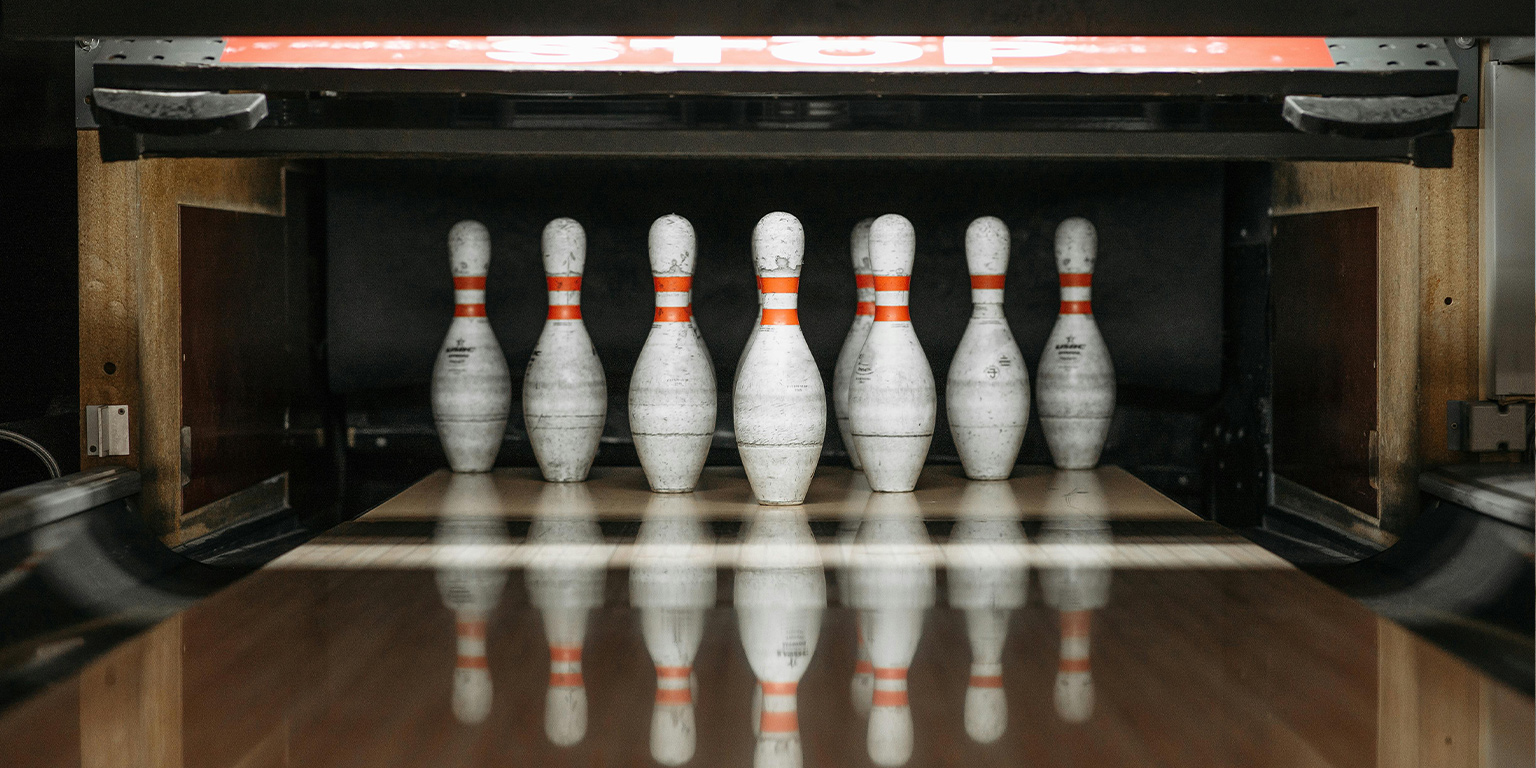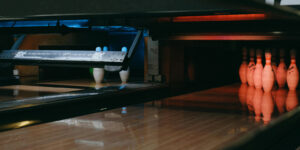
Ever feel like your bowling ball suddenly has a mind of its own? One game you’re nailing strikes — the next, you’re veering into the gutter like it’s magnetic. Don’t worry, it’s probably not your aim. What you’re experiencing might just be the secret force of the lanes: bowling oil patterns.
Often invisible to the naked eye, oil patterns play a huge role in how your ball behaves from release to pin impact. And once you understand them, you can start making smarter plays, higher scores, and actually enjoy the mystery of the game more than ever before.
What Are Bowling Oil Patterns, Anyway?
Let’s break it down.
Bowling lanes aren’t just shiny for show. Before each game or shift, lanes are coated with a precise amount of lane conditioner — a slick substance applied by an automated machine. That oil isn’t spread randomly; it’s laid out in a pattern with different lengths, widths, and oil concentrations.
These patterns:
- Protect the wooden or synthetic surface of the lane
- Control how much friction your ball encounters
- Directly impact whether your ball hooks early, late, or not at all
Think of oil patterns as road conditions for your bowling ball. A dry lane is like rough asphalt — your ball grips and hooks more. A heavily oiled lane? Like driving on a wet surface — there’s less traction, more slide.
For casual bowlers, this invisible map across the lane often goes unnoticed. But it’s always there, influencing every shot.
House Patterns vs. Sport Patterns
There are two main categories of bowling oil patterns: house patterns and sport patterns. Understanding the difference is a huge step toward improving your performance.
House Patterns
These are the standard patterns used in most open play and beginner leagues — including those at SpareZ Bowling. They’re designed to help you succeed by guiding the ball toward the pocket. The oil is heavily concentrated in the center of the lane and tapers off toward the edges. This “funnel” effect helps correct slightly off-center throws.
Why it matters: You don’t have to be perfect to score well on a house pattern — it’s built to be forgiving.
Sport Patterns
Sport patterns are used in competitive or tournament play. They apply oil more evenly or in complex shapes, meaning there’s less margin for error. Miss your mark by a few boards, and you’ll pay the price. Some sport patterns even mimic famous layouts like the “Shark,” “Cheetah,” or “Scorpion.”
How Oil Affects Ball Movement
Here’s where it gets interesting: your ball doesn’t travel in a straight line for long — unless the oil keeps it skating.
A bowling ball goes through three phases during its journey:
1. Skid Phase
- Starts right after release
- The ball glides over the heavily oiled part of the lane
- Minimal friction = no hook (yet)
2. Hook Phase
- As the oil thins out, the ball hits more friction
- It starts to curve — or “hook” — toward the pocket
- Timing is everything: too early or too late, and you’ll miss
3. Roll Phase
- This is where pin impact happens, and power is transferred
- The ball stops hooking and rolls with full traction
If your ball:
- Hooks too early = you may be playing too far outside or using too aggressive a ball.
- Slides past the pocket = you’re likely stuck in the oil too long.
- Hooks inconsistently = oil breakdown (from repeated play) might be changing the lane mid-game.
Oil patterns don’t stay static. As bowlers play, the oil shifts and dissipates, especially in high-traffic areas. That’s why a ball might hook more in the second game than it did in the first — even on the same lane.
Can Beginners Adjust to Oil Patterns? Yes!
You don’t need to be a pro bowler to react to oil patterns — you just need to pay attention and make small changes. Here are some beginner-friendly ways to start adjusting:
- Change Your Starting Position:
Move left or right on the approach (just a few boards) and watch how your ball reacts. You’re aiming for a consistent hook into the pocket — not a sharp or delayed curve. - Adjust ball speed:
– Slower ball speed = more time for the ball to hook
– Faster ball speed = delays hook and can help on dry lanes - Experiment With Your Release:
Try a slightly flatter or more curved release to influence when the hook begins. Small tweaks lead to big results.
Not all bowling balls are equal. Reactive resin balls are great for gripping through oily lanes, while plastic balls are better for straight shots and spares. Ask the staff at SpareZ Bowling which ball might suit your playing style and our typical lane conditions.
The Invisible Game Within the Game
Oil patterns are one of bowling’s best-kept secrets — but once you learn how they work, you’ll wonder how you ever bowled without thinking about them. Whether you’re aiming to break 100 or perfect your pocket hit, understanding bowling oil patterns is a game-changer.
Next time you’re at SpareZ Bowling, challenge yourself to read the lane, adjust your approach, and enjoy the strategy behind every strike. Because every lane tells a story — and now, you’re ready to read it.





